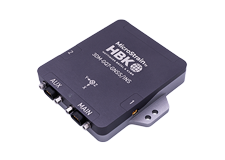Publication:
- VermontBiz.com
The US Air Force has awarded MicroStrain, Inc. a Small Business Innovation Research (SBIR) Phase I contract for $149,000 to demonstrate an integrated wireless load measurement system for improved structural health monitoring of aircraft landing gear. The system will enable aircraft operators to more accurately measure static and dynamic loads for more effective tracking of the fatigue life of these critical structures.
MicroStrain’s wireless load sensors feature deeply embedded, highly accurate strain gauge technology, precision time keeping, 16-bit digital data acquisition, advanced signal processing, non-volatile data storage, and digital radio frequency (RF) communications. After factory calibration, the wireless sensors can be directly installed in the gear without modifications to the existing landing gear structure. High-speed, time-synchronized loads data from the wireless load sensor network will be collected by a wireless sensor data aggregator (WDSA®), where embedded health algorithms shall monitor performance, calculate remaining useful life, and alert users if a potentially damaging event is detected.
“Our breakthrough wireless sensor technology will provide the Air Force with fully autonomous landing gear monitoring,” says Steven Arms, President of MicroStrain. “Not only will our sensors eliminate costly wiring, they will also use very little energy. Combined with our new miniature energy harvesters, these sensors don’t require battery maintenance. We’re very excited to work with the Air Force to qualify and demonstrate our advanced sensors in this important application.”
This work is expected to improve maintenance scheduling, reduce life-cycle costs, and increase safety across the fleet of Air Force, Navy, Army, Marines, Coast Guard, civil, and commercial aircraft.
Note that the US Air Force does not endorse or recommend any particular product or process by supporting this project’s research and development efforts.










